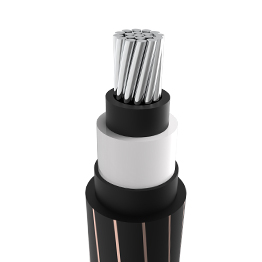
Medium voltage cables (MV cables) are critical components in the transmission and distribution of electrical power. Engineers design these cables to operate at voltages between 1 kV and 35 kV, making them suitable for a range of industrial and commercial applications. In this article, we will explore medium voltage cables, their industrial applications, the materials used in their construction, and other relevant characteristics that make them essential for various power distribution needs.
What Are Medium Voltage Cables?
Medium voltage cables are electrical cables used for power distribution in industrial and commercial settings. These cables are typically employed in systems that operate at voltages higher than low voltage (LV) systems, but lower than high voltage (HV) systems. The term “medium voltage” generally refers to the range between 1 kilovolt (kV) and 35 kV, although some definitions may extend this range up to 69 kV.
Engineers design these cables to carry electrical energy across significant distances with minimal power loss, using them in systems where both reliability and efficiency are crucial. MV cables feature insulation to withstand the higher voltage levels they carry and often include enhanced protection against environmental factors.
Industrial Applications of Medium Voltage Cables
Medium voltage cables are widely used across various industries due to their ability to handle higher voltages and transmit electricity efficiently. Some of the key industrial applications include:
Power Distribution in Factories and Plants
In large industrial facilities, operators use medium voltage cables to distribute power to different parts of the facility. These cables handle the higher loads needed to run heavy machinery and equipment, ensuring consistent and efficient power delivery across the entire site.
Renewable Energy Systems
Medium voltage cables play a critical role in renewable energy projects, including wind farms, solar power plants, and hydroelectric facilities. They are used to connect energy generation units to the main power grid, helping to transfer electricity from renewable sources to end-users or storage systems.
Utility Substations
Utility companies use medium voltage cables to connect substations to the main power grid. These cables transmit electricity at medium voltage levels, ensuring that the energy is efficiently distributed to residential, commercial, and industrial users.
Mining Operations
In mining operations, operators use medium voltage cables to power equipment and machinery, such as drills, conveyor belts, and processing plants. These cables ensure reliable power in remote areas with limited access to traditional power infrastructure.
Materials Used in Medium Voltage Cables
The materials used in medium voltage cables are carefully selected to ensure durability, flexibility, and the ability to withstand high voltage levels. The three main components of a medium voltage cable include the conductor, insulation, and outer sheath.
Conductor Material
The conductor is the core of the cable and is responsible for carrying the electrical current. Common materials used for the conductor in medium voltage cables include:
- Copper: Copper is widely used in medium voltage cables due to its excellent conductivity and flexibility. It is the preferred choice for applications where high current carrying capacity is required.
- Aluminum: Aluminum is a lightweight alternative to copper, offering good conductivity at a lower cost. It is often used in medium voltage cables for overhead power lines and large-scale power distribution projects.
Insulation Material
The insulation layer is designed to protect the conductor from electrical faults and prevent energy loss. The most common insulation materials used in medium voltage cables are:
- Cross-Linked Polyethylene (XLPE): XLPE is highly durable and resistant to high temperatures, making it a popular choice for insulating medium voltage cables. It provides excellent electrical insulation and is resistant to chemicals and moisture.
- Ethylene Propylene Rubber (EPR): EPR is another common insulation material that offers flexibility, good electrical properties, and resistance to heat, ozone, and weathering.
Outer Sheath Material
The outer sheath provides physical protection to the cable and ensures that it can withstand environmental factors such as moisture, chemicals, and mechanical stress. Materials used for the outer sheath include:
- Polyvinyl Chloride (PVC): PVC is used for its durability and resistance to chemicals, making it suitable for outdoor installations.
- Polyethylene (PE): PE provides excellent resistance to moisture and is often used in underground and outdoor applications where the cable may be exposed to harsh conditions.
Voltage Characteristics of Medium Voltage Cables
Medium voltage cables are designed to handle voltages ranging from 1 kV to 35 kV. The specific voltage rating of a cable depends on its application and the distance it needs to cover. Cables are rated based on their ability to maintain insulation integrity at specific voltage levels, ensuring that they can safely and efficiently transmit electricity without risk of electrical faults or power loss.
Conclusion
Medium voltage cables are essential components in power distribution systems across various industries, providing reliable and efficient energy transmission. These cables are made from high-quality materials such as copper, aluminum, XLPE, and EPR, ensuring that they can handle higher voltages and withstand harsh environmental conditions. From powering industrial plants to connecting renewable energy sources to the grid, medium voltage cables play a critical role in modern energy infrastructure. Selecting the right cable with the appropriate voltage rating and materials ensures that electrical systems remain safe, efficient, and reliable for long-term use.

